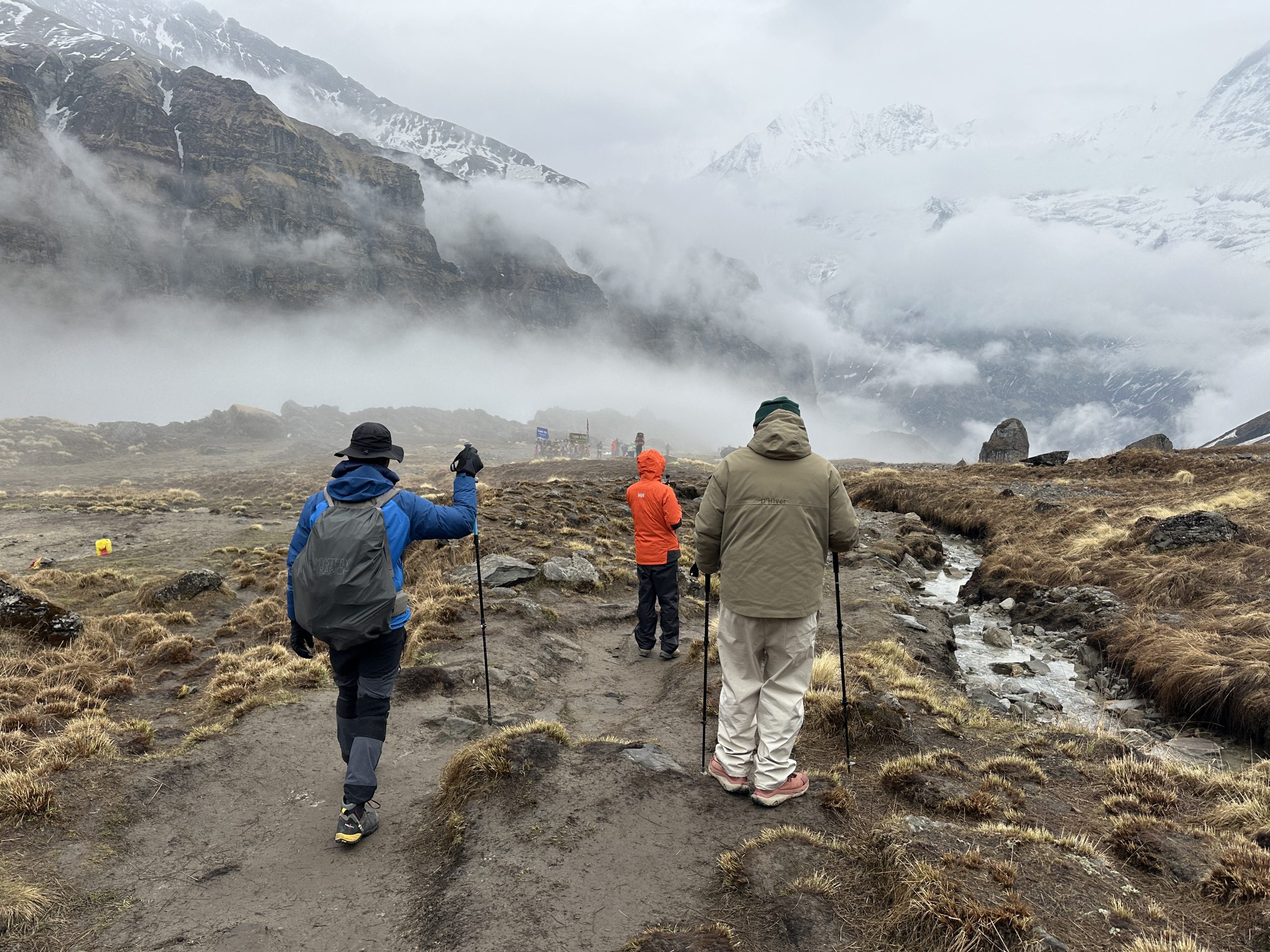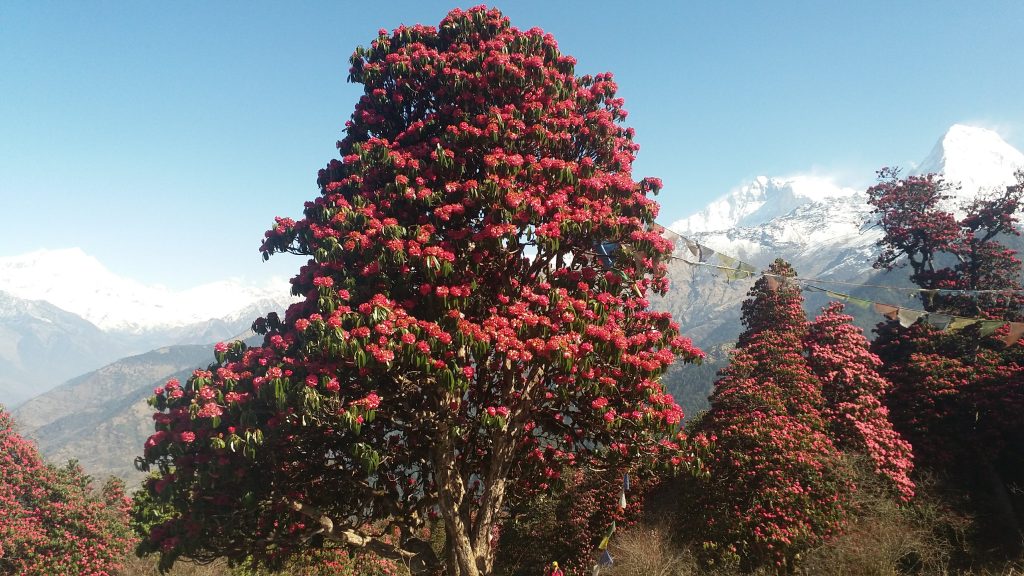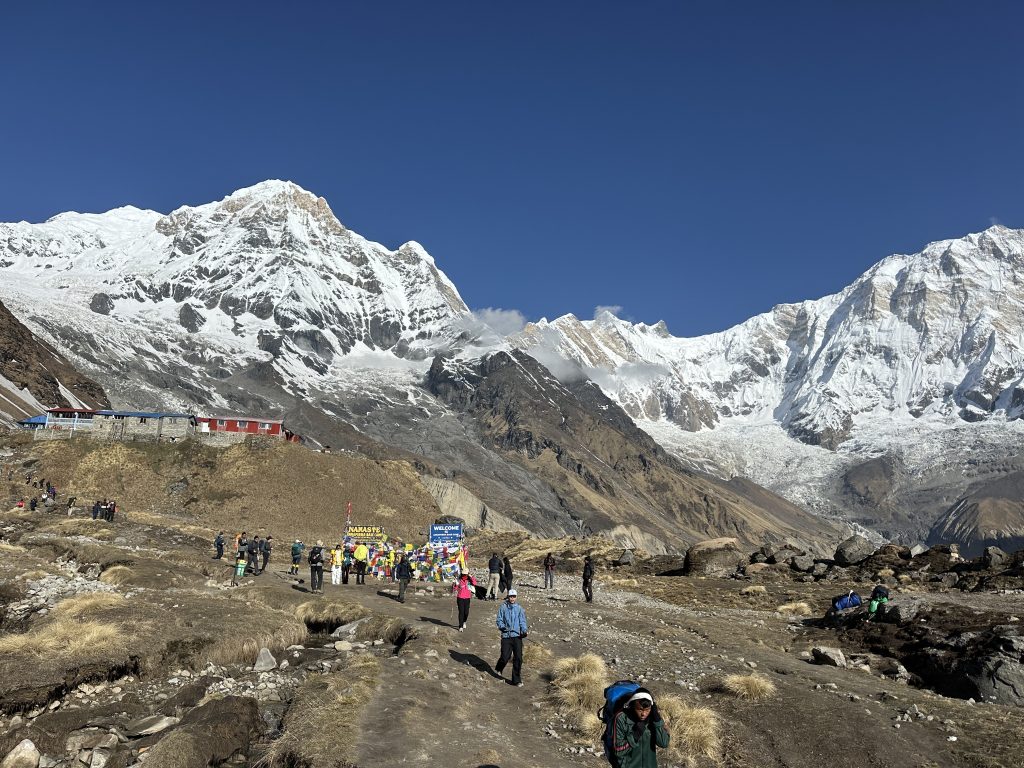
For trekkers, Nepal is a dream destination with varying landscapes from lush green terraced hills to snow-capped peaks in the Himalayas. Each journey promises a unique adventure of a lifetime and countless opportunities to capture stunning photographs.
Nepal’s vibrant culture, welcoming homes, and off-the-beaten-path options, mean that your trekking experience in Nepal could be greatly characterized by the experience on and off the flat path.
This blog aims to highlight the key considerations for anyone planning to trek in Nepal. We want to help you focus on both sections of trek on conditions or on season in your trekking plans, the most popular and scenic routes, as well as considerations to provide some documentary and landscape prep for the climate and altitude.
We will address each topic step by step, whether it be the true trek for your dreams of Everest Base Camp Trek, Annapurna Circuit Trek, or a remote trek. We aim to provide you with realistic expectations of the trek, the needs from the fitness perspective of what physical fitness may be needed, and what makes trekking in Nepal unforgettable.
Let’s explore this step by step in Nepal’s Himalayan trekking paradise!
When to Go Trekking in Nepal

Spring Season (March–May)
The spring season in Nepal, from March to May, is a great trekking experience, characterized by clear skies, mild temperatures, and beautiful blooming rhododendrons that light up the trails. This is a great season for a comfortable trekking experience, with many options still available, such as Everest Base Camp, Annapurna, and Langtang, and a nice tip. While blooming, it is beautiful.
Generally speaking, during spring trekking, the temperature can range from 15ºC to 25ºC on the lower elevations during the daytime. The temperatures at higher elevation are cooler but still comfortable for trekking.
There can be actual weather patterns during this time as some haziness or some light precipitation may occur. The conditions are usually good for trekking, and a population increase compared to some higher traffic during the fall peak season.
Autumn Season (September–November)
Autumn is most popular trekking time in Nepal; it offers stable weather patterns, clear skies, and moderate temperatures. This is when the famous Dashain and Tihar festivals take over the local village cultures and celebrations in various colors, foods, and traditions.
Trekkers experience crisp air and expansive mountain views on all major routes, from Everest Base Camp, to Ghorepani, to the Annapurna Circuit. This is a very comfortable temperature for a trek, and ideal for beginner or experienced trekkers alike.
Monsoon Season (June–August)
The monsoon is not friendly on Nepal trekking accounts with heavy rain, humidity, treacherous, slippery, and leechy trails, and significantly reduced visibility to the mountains. Trekkers should be aware of wet and muddy paths, potential landslides covering the road or path, and significant green foliage to consider through the whole monsoon season.
Rainfall doesn’t stop trekking in the rain-shadow parts of the Himalaya, like Upper Mustang and Dolpo – they have a dry and unique landscape, often without other trekkers.
Winter Season (December–February)
Winter expeditions involve cold weather and, in most areas, dry, clear conditions at low elevations. Although trails in the high altitudes will have snow, most passes will be impassable as they become buried in snow or ice.
Trails to places like Poon Hill or Tengboche will have generally little traffic and are still ideal winter treks for the truly cold trail lover who enjoys a brisk start to the day or a type of trek where they have to sleep outside in the cold. They will be reasonably level paths, with beautiful sites at lower altitude paths.
Where to Trek in Nepal: Top Routes by Region & Interest

Everest Region
Everest region has Everest Base Camp trek, Gokyo Lakes trek, and Three Passes trek. These trekking routes will take you through vibrant Sherpa villages, yak pastures, and ancient monasteries.
The Everest region has become known for exciting high-altitude adventures, stunning views of towering glaciers, and jaw-dropping views of the amazing peaks fronted by cowherds of yak. The trek will test your endurance while participating in a truly unforgettable journey which will be capped with unparalleled views.
Annapurna Region
Annapurna region is also home to Annapurna Circuit trek, Annapurna Base Camp trek, and Mardi Himal trek. These routes are known for their surreal beauty of lush forests, deep canyons, alpine meadows, and towering Himalayas. In the highland, many teahouses are awaiting you to serve warm hospitality.
Once on the hiking trails, you will walk in changing landscapes from lowlands to desertification of the Himalaya heights. You will go to places like Tatopani and Gurung villages, which offer you cultural recovery with panoramic views of Annapurna and Dhaulagiri.
Langtang Region
Langtang region is near Kathmandu and has trekking trails such as Langtang Valley trek, Gosaikunda Lake, and Tamang Heritage Trail. The trail passes through lush forest, rhododendron trees, and peaceful Tamang villages, representing amazing cultural and natural interaction.
Trekkers can participate in Buddhist traditions at Kyanjin Gompa and take the opportunity to sample some local cheese. The dramatic valley views and restored teahouses of this area are a thoughtful and meaningful place to be.
Off-the-Beaten-Path Treks
Remote paths such as the Manaslu Circuit trek, Upper Mustang, Kanchenjunga, and Dolpo offer a glimpse into the real wilds of Nepal. These are harder treks, through remote valleys, monasteries, and untouched villages, free from the hustle and bustle of mass tourism.
The fewer the people, and the more raw nature, present trekkers with space and a chance to connect back to the hidden heritage of Nepal. This will require a bit of effort: hard terrain, fewer amenities, and a really big payoff for those who are adventurous and experienced.
What to Expect While Trekking in Nepal
Weather & Conditions
Mountain weather in Nepal can be quite unpredictable, and may change very rapidly from warm sun to cold, wind, rain, etc. Trekkers should always prepare for these possible changes in weather conditions for their safety and comfort. Layering clothing is essential to make those easy adaptations throughout the day.
You should have the proper gear. A layering system includes base layers, thermal underwear, fleece or down jackets for insulation, waterproof rain jackets, boots for trekking, gaiters, and a balaclava for the colder conditions.
Accommodation
Most trekking routes have a teahouse option, where you can find accommodation at teahouses. Teahouse rooms are basic with shared bathroom, and serve simple local Nepali meals; however, they provide a comfortable, social atmosphere while being simple enough to have acceptable expectations.
Camping treks provide the benefits of relative remoteness, distance, and flexibility but will require more equipment and facilities. Teahouse trekking is the recommended option if you are new to trekking or want to have the conveniences of set accommodation options and local meals available.
Trail Difficulty & Fitness
Trekking routes range from easy walks to difficult ascents at high altitude. Easy treks only require simple fitness, moderate treks require fitness & acclimatization, and difficult treks require proper physical fitness, strength, and adequate preparation.
Physical preparation can include cardio fitness, strength training, and getting out on some practice hikes. Mental strength is also important for handling altitude, weather, and long days of hiking.
Culture & Etiquette
While in Nepal, you are required to dress modestly and ask locals before taking pictures and buying local products. Being polite with locals while taking will create a warm and welcoming environment and help to conserve their dignity.
Learning a few Nepali words will be helpful to you to show respect toward the people, such as Namaste (hello) and Dhanyabad (thank you).
Permits & Paperwork
Trekkers will need to get a TIMS (Trekkers’ Information Management System) card and permits for either National Parks or Conservation Areas, depending on the route taken. The permits ensure safety and protection of the environment.
Permit fees vary from region to region. For instance, the Annapurna Conservation Area and Sagarmatha National Park have fees. Trekkers must always carry their permits with them on the trail since it is common to find checkpoints.
Guided vs. Independent Trekking
Guides and porters offer greater safety, greater insights into the local culture, and alleviate logistical factors on your trek, especially for those trekking for the first time. The guide and porter will help you navigate the route, alleviate altitude sickness, and use the local dialect.
Independent trekking provides some opportunities for flexibility and cost savings, but as with all things, create a well-planned approach to your adventure. Certain areas, for example Manaslu and Upper Mustang, have greater limitations on the activities allowed by requiring a guide to accompany your adventure.
How to get Nepalese Visa
To obtain a Nepalese visa, arrivals must apply online between 15 days before arrival via the Nepal Department of Immigration eVisa page or receive a Visa on Arrival.
You need to fill out an arrival card, pay fees in cash, and show a passport when arriving through Kathmandu airport or other land borders. Tourist visas are 15, 30, or 90 days in duration and will allow multiple entries. You can extend your visa up to 150 days per year in Nepal.
What currency does Nepal accept?
Nepal uses the Nepalese rupee as its currency (NPR), which is accepted for all purchases in Nepal. Some border and tourist areas will accept Indian rupees, but it is still advisable to use NPR.
Packing Tips & Essential Gear
- Select clothing that can be layered for the trekking season.
- Wear sturdy all-weather hiking boots for traveling across rough terrain.
- Make sure to bring along a warm sleeping bag rated for cold temperatures.
- Bring some purification tablets or a portable water filter.
- Pack plenty of energy-rich, lightweight snacks along for the trail.
- Pack sun protection – sunscreen, hat, and sunglasses.
- Take any other essentials, for example, a first-aid kit, headlamp, towel, etc.
Health & Safety Tips
When trekking in Nepal, it is important to acclimatize to avoid altitude sickness. Follow “climb high, sleep low” principle to maintain steady pace on the trail. Above 3000 meters, this principle will help you to adapt to the lower oxygen level.
Travel insurance covering emergency evacuation is also important when trekking in high altitudes. Additionally, you may need helicopter evacuations, so ensure your policy covers these eventualities before starting your trek.
Food security is also equally important in high-altitude trekking. Eat well-cooked food and drink purified or boiled water. Do not be tempted to drink untreated water, and instead use water purification tablets or water filters. Additionally, book reputable teahouses in the trails.
Conclusion
Although Nepal can be best visited in spring and autumn, you can visit the country year-round. You will get some challenges with amazing scenery in each trek, including the Everest Base Camp trek, Annapurna Circuit trek, Langtang Valley trek, and remote off-the-beaten-path.
Based on your health, physical fitness, and goals, choose trekking seasons and the routes. Whether you look for adventure at a high altitude or yourself immersed in the cultural acceptance of local villages, you will find a trail in Nepal to enhance your adventure, creating positive and lasting memories.
Are you ready to trek in Nepal? Comment below! If you have already felt the surreal beauty of Nepal, then comment below mentioning your experience.
Posted on
